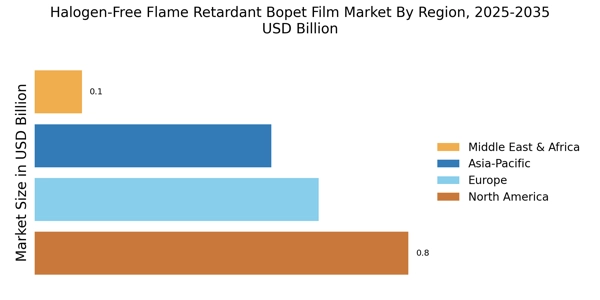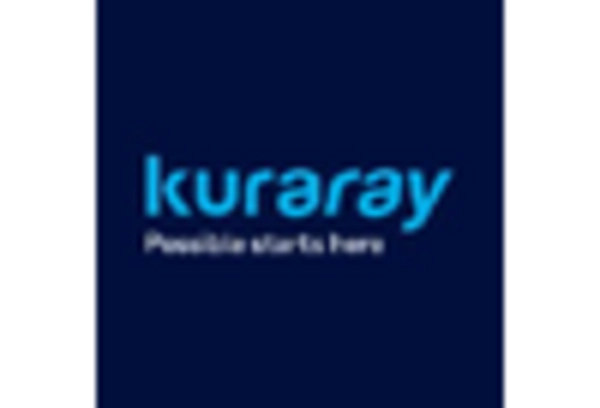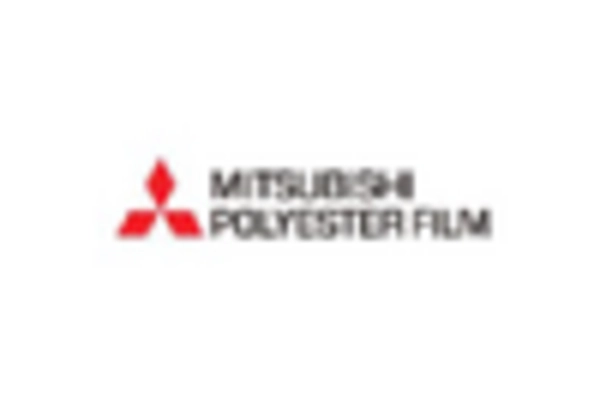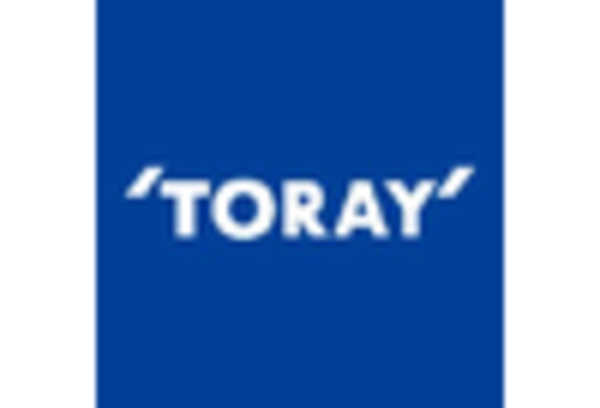Regulatory Pressures
Regulatory pressures regarding fire safety and environmental impact are compelling manufacturers to adopt halogen-free solutions, thereby propelling the Halogen-Free Flame Retardant Bopet Film Market. Governments and regulatory bodies worldwide are implementing stringent regulations aimed at reducing the use of hazardous substances in materials. This has led to a marked increase in the demand for halogen-free flame retardants, as they are considered safer alternatives. For example, the European Union's REACH regulations have prompted many companies to transition to halogen-free materials to ensure compliance. The market is projected to expand as more industries recognize the importance of adhering to these regulations, with an anticipated growth rate of approximately 7% over the next few years. This trend underscores the critical role of regulatory frameworks in shaping the Halogen-Free Flame Retardant Bopet Film Market.
Sustainability Initiatives
The increasing emphasis on sustainability within various industries appears to drive the Halogen-Free Flame Retardant Bopet Film Market. As companies strive to reduce their environmental footprint, the demand for eco-friendly materials has surged. Halogen-free flame retardants are perceived as safer alternatives, aligning with the growing consumer preference for sustainable products. This shift is evident in sectors such as electronics and packaging, where manufacturers are actively seeking materials that comply with environmental regulations. The market for halogen-free flame retardant materials is projected to grow at a compound annual growth rate of approximately 6% over the next five years, indicating a robust demand for such products. Consequently, the Halogen-Free Flame Retardant Bopet Film Market is likely to benefit from this trend, as more companies adopt sustainable practices.
Technological Advancements
Technological advancements in material science are significantly influencing the Halogen-Free Flame Retardant Bopet Film Market. Innovations in polymer chemistry and processing techniques have led to the development of more efficient and effective flame retardant formulations. These advancements not only enhance the performance of Bopet films but also ensure compliance with stringent safety standards. For instance, the introduction of new additives and processing methods has improved the thermal stability and mechanical properties of halogen-free films. As a result, manufacturers are increasingly adopting these advanced materials in applications ranging from electrical insulation to automotive components. The market is expected to witness a growth rate of around 5% annually, driven by the continuous evolution of technology in the halogen-free flame retardant sector.
Diverse End-Use Applications
The diverse end-use applications of halogen-free flame retardant Bopet films are a key driver for the Halogen-Free Flame Retardant Bopet Film Market. These films are utilized across various sectors, including electronics, automotive, and packaging, due to their excellent flame retardant properties and mechanical strength. In the electronics sector, for instance, the demand for halogen-free materials is rising as manufacturers seek to enhance the safety and reliability of their products. The automotive industry is also increasingly adopting these films to meet safety standards and improve vehicle performance. As a result, the market is expected to grow at a rate of around 6% annually, reflecting the expanding applications of halogen-free flame retardant materials in multiple industries.
Consumer Awareness and Demand
Consumer awareness regarding the hazards associated with halogenated flame retardants is driving the Halogen-Free Flame Retardant Bopet Film Market. As consumers become more informed about the potential health risks linked to traditional flame retardants, there is a growing preference for safer alternatives. This shift in consumer sentiment is prompting manufacturers to prioritize the development of halogen-free products. The demand for such materials is particularly pronounced in sectors like textiles and consumer electronics, where safety and environmental considerations are paramount. Market analysts project that the demand for halogen-free flame retardant materials will continue to rise, with an expected growth rate of approximately 5% over the next few years. This trend highlights the influence of consumer preferences on the Halogen-Free Flame Retardant Bopet Film Market.




















Leave a Comment